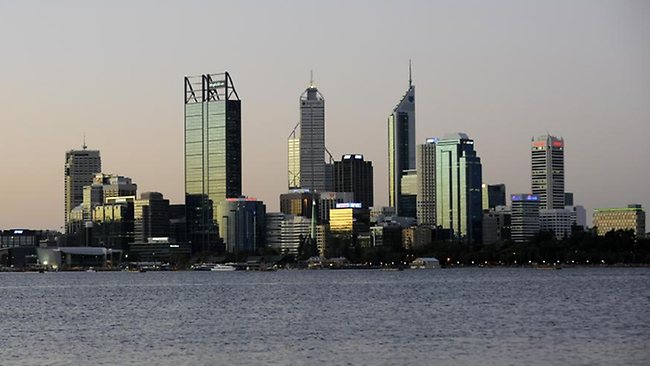
March 2015. Until figures released today on the housing market, it seem likely that the RBA would reduce interest rates by another quarter percent tomorrow. On balance, we now think it likely that interest rates will be left on hold while they watch trends in the economy and the housing market for another month or two.
Around Australia, dwelling prices jumped 0.3% in February on the back of a 1.3% increase in January according to Corelogic RP Data. Overall, prices now at an all-time high.
The fall in interest rates in February, combined with continuing relatively strong population growth, and some signs of a turnaround in the employment market fuelling demand. Demand from foreign purchasers is also pushing prices in Sydney and Melbourne, and the imposition of an additional tax by the Federal government on foreign buyers will do nothing to affect demand.
Rising dwelling prices, combined with strengthening credit growth, suggests that interest rates will be left on the whole tomorrow. The next reduction in interest rates may get pushed back to April, giving the RBA time to assess economic trends.
But the national figures obscure very different trends in each state.
Sydney
Sydney remains the hottest city in the country for real estate prices. Houses were up 1.6% on the month, and 14.7% on the year. Units were up 0.6% on the month and 9.5% on the year. Home values, being both houses and units, are up 2.9% year to date. The auction clearance rate at the weekend was almost a record at 82.8%, with reports of frenzied buying and prices well above reserve.
Sydney remains the biggest headache of the RBA as it seeks to balance the needs for economic growth against what is effectively boom conditions in Sydney. At 15% per annum growth, Sydney is redlining and at the level where the bank will want to take punitive action.
While the frenzied pace of this month is likely to last for a whole year, Sydney growth still looks to be in the range of 10% to 15% for the next year. Another month of figures at the high end would likely see the bank to take action. Initially this could be tighter supervision by APRA and the imposition of more macro prudential controls, limiting the availability of mortgage finance in Sydney. That is the most likely response, but the risk of it triggering a reversal on interest rate policy, with an increase in interest rates, cannot be ruled out.
Melbourne
Home values in Melbourne also of 2.9% year to date, but this was mostly due to increases in January, with February barely registering an increase at 0.1%. Unit prices showed a slightly stronger increase at 0.5% month on month, but in annual terms, house prices are up 8% on the last year, units 2.8%. So headlines reporting the boom in Melbourne do not really reflect the true picture.
However, there is no denying that last weekend was a good one for Melbourne, with the auction clearance rate at 76.5%, one of the strongest figures on record.
Elsewhere
Once we leave Sydney and Melbourne, where the word “boom” still gets used, we might as well be in another country, where prices are struggling or declining.
Brisbane prices were up only 0.3% year-to-date and actually fell -0.5% in February.
Adelaide prices were up 0.5% in February but still down -0.8% year-to-date.
Perth is interesting. Despite signs of continued market activity, prices fell -2.1% in February to be down -2.8% year-to-date and barely higher than this time last year. Surprisingly, it is house prices that down the most, -2.3%, versus units which down -0.4%. Given the oversupply in the unit market, it has downside potential.
Canberra is not attracting headlines, yet it should be. Canberra houses were of the 1.54% in February, almost the same as Sydney, although unit prices were down -1.25%. It is fair to say that the Canberra housing market is recovering as the dangers from Federal government cutbacks receded.
Darwin was up a relatively strong 0.9% to be up1.6% year-to-date.
Hobart was down 0.9% in February, but is up 0.7% year-to-date.
It is still a tale of two countries. Sydney is in boom territory, Melbourne is still growing at a realistic pace. Canberra has joined in with house price growth. But Brisbane, Adelaide and Perth with downside bias in pricing.
For consumers, it is still a balancing act to settle of lower interest rates and borrowing costs, against a weak economy and the likelihood of fiscal tightening in the next budget. In fact, it is the next Federal budget in May that may bring an end to the party, so while the current strength in Sydney prices is of concern to the BA, we still see the most likely interest rate scenario is being another cut in March and April, followed by the expiration of the boom market after May, as the reality of budget cuts combine with the traditional slowdown in the winter months.
About Propell National Valuers
Propell is a national provider of property valuation, advisory services, and buyer’s advocacy services.
We have expertise in residential, commercial and rural/agribusiness valuations, infrastructure, asset, insurance, forensic, business and family law valuations, buyer’s advocacy services and offer a full range of quantity surveying services. We also offer dedicated asset management services incorporating the management of mortgagee in possession/distressed assets, acquisition and disposal services.
Propell has a national workforce of over 200 staff in every state and territory in Australia. Propell to undertake valuations across all states and territories with a postcode coverage exceeding 85% of Australia’s population.




